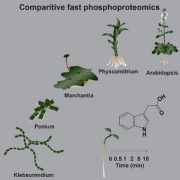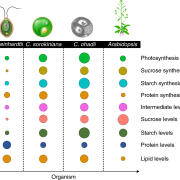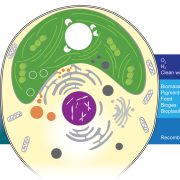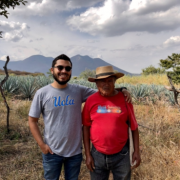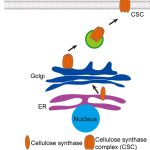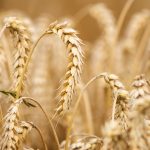A unique photoinhibition protection mechanism in Chlorella ohadii that thrives in extreme high-light intensities
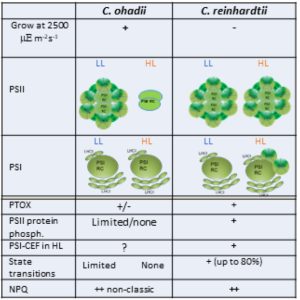 In plants and algae, excessive light can damage the photosystem and lead to a decrease in photosynthetic capacity, a process called photoinhibition (PI). Levin et al. showed that Chlorella ohadii isolated from the Negev desert in Israel lacks or has limited capability of the usual photoprotection mechanisms seen in plants and model microalgae species including psbS, LHCSR, PSII protein phosphorylation and state-transitions. Instead, C. ohadii accumulates a high amount of carotene biosynthesis related protein (CBR) at high light intensity. These CBRs were suggested to bind to overexcited chlorophylls to dissipate energy, avoiding reactive oxygen species (ROS) formation and photoinhibition. In addition to CBRs, C. ohadii undergo major structural changes to the photosystem II antennae which lowers the amount of light entering the reaction center. Further studies of the high-light repsonses of C. ohadii and investigating CBR overexpression in plants could could contribute towards building resilient and high-yielding crops that can grow in desert environment. (Summary by Yen Peng (Apple) Chew @_applechew) Plant J. 10.1111/tpj.16241
In plants and algae, excessive light can damage the photosystem and lead to a decrease in photosynthetic capacity, a process called photoinhibition (PI). Levin et al. showed that Chlorella ohadii isolated from the Negev desert in Israel lacks or has limited capability of the usual photoprotection mechanisms seen in plants and model microalgae species including psbS, LHCSR, PSII protein phosphorylation and state-transitions. Instead, C. ohadii accumulates a high amount of carotene biosynthesis related protein (CBR) at high light intensity. These CBRs were suggested to bind to overexcited chlorophylls to dissipate energy, avoiding reactive oxygen species (ROS) formation and photoinhibition. In addition to CBRs, C. ohadii undergo major structural changes to the photosystem II antennae which lowers the amount of light entering the reaction center. Further studies of the high-light repsonses of C. ohadii and investigating CBR overexpression in plants could could contribute towards building resilient and high-yielding crops that can grow in desert environment. (Summary by Yen Peng (Apple) Chew @_applechew) Plant J. 10.1111/tpj.16241


